Photos by Gracey Gurwitch
After reading this, many in the tactical community may label me a heretic! That’s because I’m about to argue against two very popular tactical shooting techniques endorsed by many who are considered experts in tactical shooting. The reason I don’t like these two techniques is based on my experience of six combat tours with Special Operations.
When employed in real life (as opposed to during training or practice), these techniques are less than ideal. Worse, using them may actually hamper you when your life is on the line. My intent is not to write a controversial piece for its own sake, but rather, my hope is that you take my points into consideration and use them to evaluate if these techniques truly are the best methods for you.
Table of Contents
GROSS MOTOR SKILLS WILL SAVE YOUR LIFE!
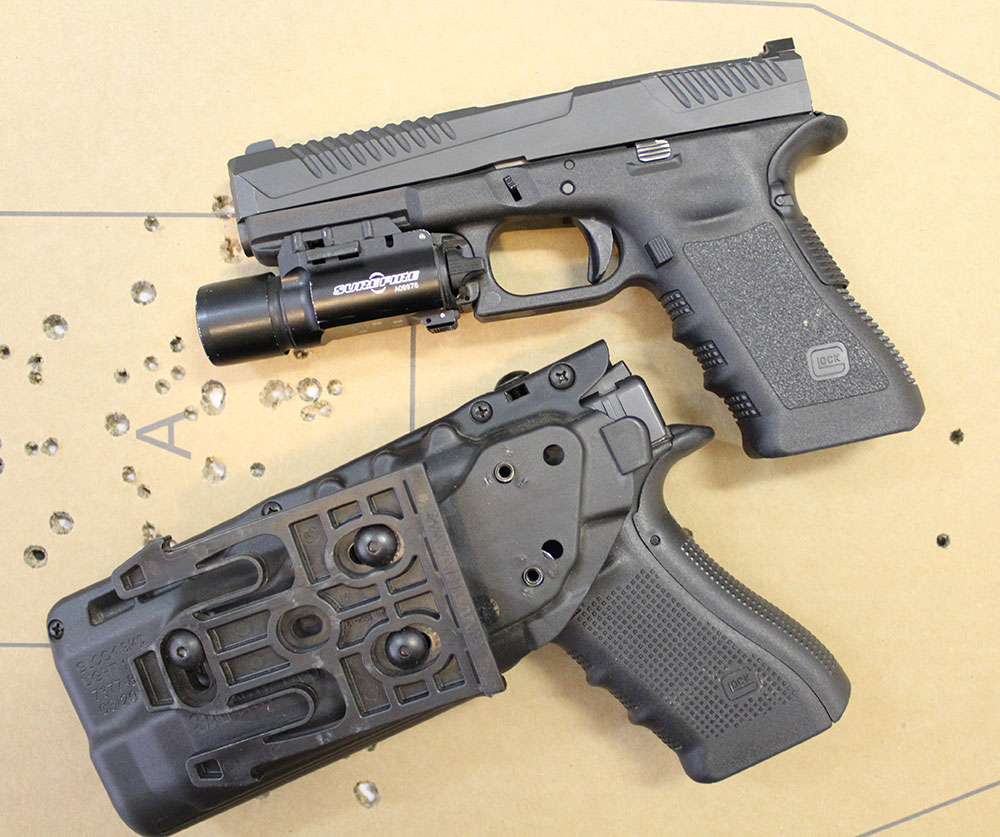
“You need to rely on gross motor skills!” How many times have you heard this? This widely held belief is based on the idea that, due to the stress of one’s life being in danger during a gunfight, it is best to utilize techniques based on gross motor movements because you will not have the dexterity or mental focus to perform tasks that require fine motor movements with your fingers.
While there is some merit to this methodology, the issue I have with it is, it ignores the fact that training and repetition do help give one the ability to accomplish tasks under stress.
This methodology of gross motor movements disregards how many shooting courses one may have attended, how much training one has, or how many repetitions of something one has done. When faced with danger, one will automatically become a panic-stricken, window-licking idiot.
If that were truly the case, how have any Soldiers or law enforcement officers, aside from luck, survived their first gunfight? Another problem with the gross motor skill principle is it seems to be applied on a selective basis with no consistency. It applies for certain tasks requiring fine motor movements, but for other tasks requiring just as much fine motor movement, it does not.
Correct me if I’m wrong, but the only time relying on gross motor skills seems to come up is the reason why one should use the power stroke method of chambering a round in the pistol instead of using the slide release. The reason (excuse) is that under stress, there’s a good chance one may not have the dexterity to press down on the slide release or may miss it altogether. The argument is that power stroking solves this.
Instead of relying on one finger to press down on a lever, one utilizes their entire hand to pull back the slide (allowing the slide stop to disengage) then lets go of it to chamber a round. I don’t disagree that power stroking is a very positive method, but my big question is, if one will not have the fine motor skills to utilize the slide release under stress, how can one be expected to be able to press the trigger to make an accurate shot while under stress?
Doesn’t pressing the trigger without jerking or pulling the pistol off target require fine motor skills? The answer from most gross motor skill advocates is that they agree trigger control is a fine motor skill, but the loss of fine trigger control while under stress is not that big of a deal. Why? Because a typical self-defense shooting usually takes place at a very short distance (often at arm’s length), so a high degree of marksmanship ability is not necessarily needed. Really?
I find that a weak answer. Do you really want to base your self-defense techniques on the chance that you won’t need to shoot beyond a few feet? Think about this: Go through any tactical shooting course and you will most likely spend a ton of time practicing everything from making precise head shots to hitting targets at distance to shooting multiple rapid strings of fire at multiple targets.
That’s a lot of trigger control. How is it usually justified that one can accomplish all this under pressure? The answer is through training and repetition. So one can be trained to press on a trigger using fine motor skills when one’s life is in danger, but one will not have the fine motor skills to be able to press down on the slide release during a reload? See the conundrum?
Let me throw in two more things. The reason you are manipulating the slide is because you have shot to slide lock. Before you rack the slide, you have to replace the magazine. Isn’t pressing that small mag release button arguably just as much a fine motor skill as hitting the slide release?</p.
What about deactivating retention on a holster during the draw process? Some of the most popular tactical holsters, such as Safariland’s ALS line, require the shooter to manipulate a small lever with the shooting-hand thumb. So again, in a life-or-death situation, one can train to maintain the fine motor skills to manipulate a retention lever or mag release with their firing-hand thumb, but not have the ability to press the slide stop with that same thumb?
THE POWER STROKE
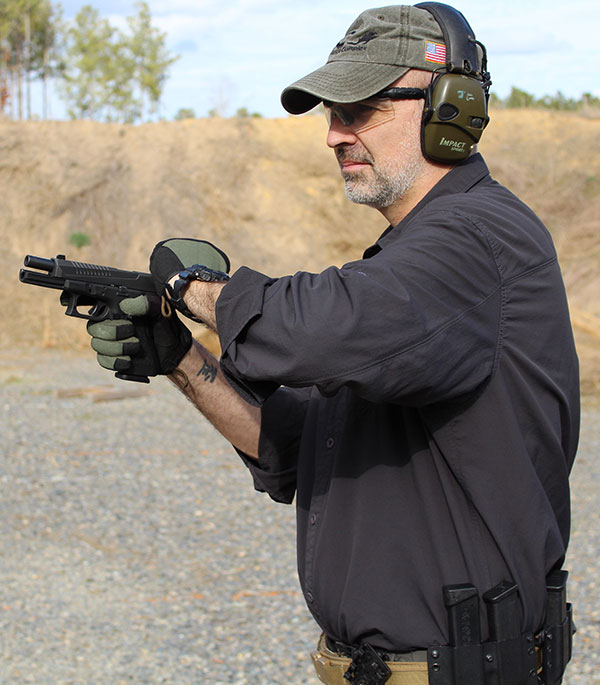
I agree the power stroke is a very positive technique, but my problem with it is, when compared to using the slide release or the sling shot method, it’s the slowest technique of the three.
What makes it the slowest is your support hand has to travel the greatest distance overall to perform the power stroke. After inserting a mag into a pistol, one must rotate the support hand palm down, grasping the top slide between palm and all four fingers, then pull back toward oneself, releasing the slide from the slide stop and allowing it to go forward, then the support hand returns to form a two-handed grip.
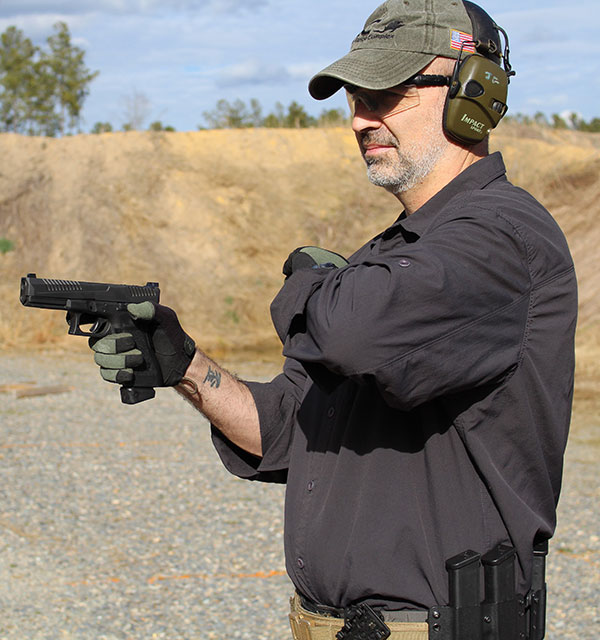
A common issue with users of the power stroke is, when pulling back the slide with the support hand, a tendency to pull back too far after releasing the slide at the end of the power stroke. The support hand often ends up near the shooter’s neck or shoulder. This of course means the farther the support hand is from the gun, the longer it takes to bring it back to the pistol and reform a two-handed grip.
When using the slide release, after inserting a fresh magazine, one simply uses the firing-hand thumb to press the slide release as the support hand reforms the grip.
Of course, I totally agree that shooters with small hands or shooting with gloves might find it difficult to press the slide release. For those with this issue and those who prefer a more positive method based on gross motor skills, there is the sling shot method, which also utilizes a support-hand grip on the slide.
SLING SHOT
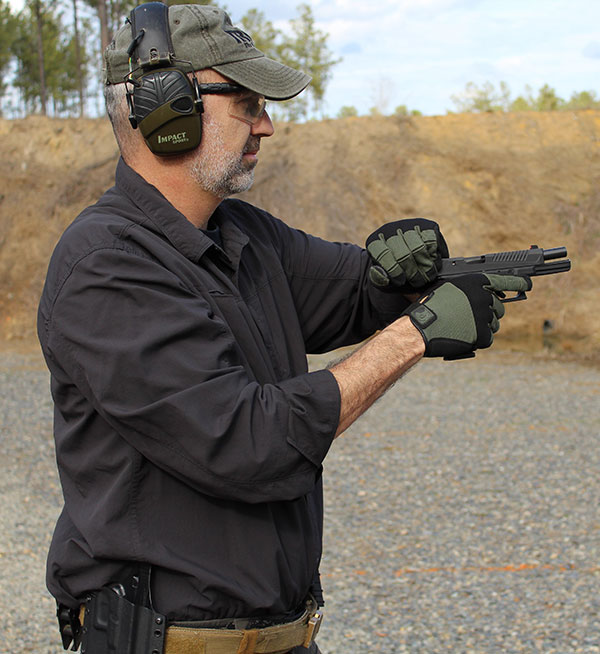
When using the sling shot method, instead of rotating the palm down to grasp the slide, the support hand grasps the rear of the slide between thumb and all four fingers. This requires less movement than having to rotate the palm down.
Plus one can rotate the pistol in toward the support hand to help get a faster grip on the slide. What really makes this faster is, because there is less overall distance, the support hand has to move to get back to a two-handed grip compared to power stroking.
Can one argue there are only minor differences in speed among all three techniques? Yes, and again I’m not saying the power stroke is a bad technique. It’s just not that fast of a technique. I know the popular saying “Slow is smooth and smooth is fast,” but really, in a gunfight, slow is just, well … slow.
SCANNING LEFT, RIGHT, AND REAR
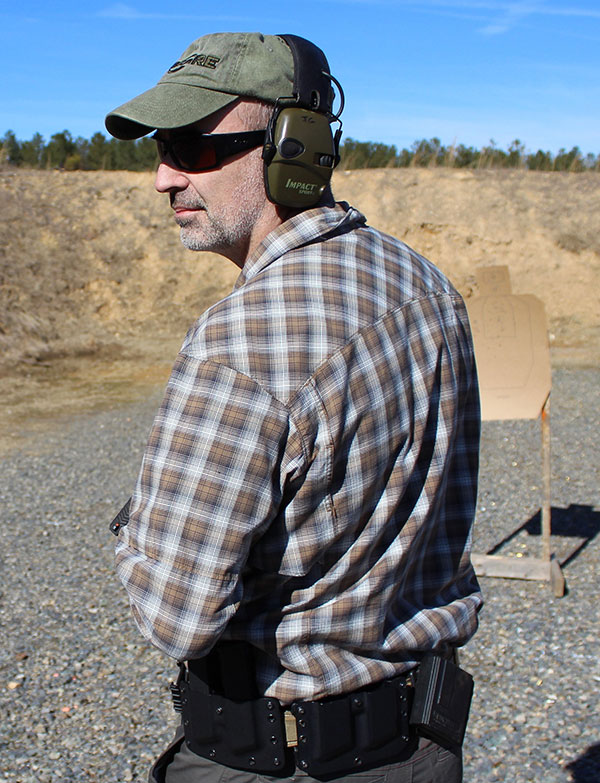
I particularly loathe this next technique: After engaging a threat, one should then scan all around, looking left, right, and rear to ensure no more threats are present. The given reason is this helps one break out of the hyper focus one can have on a threat (commonly referred to as tunnel vision) and prepare one for the possibility of other threats coming from blind spots.
But doing it all the time on the flat range, knowing nothing is there, it becomes more of a mind-numbing training scar than a practical technique. You can’t tell me shooters who scan after each drill or engagement or every couple of rounds do not get bored scanning for non-existent threats. This results in shooters not really looking and just going through the motions of scanning because it’s the “tactical” thing to do.
What can make this worse, the shooter is actually training himself to look away from the threat automatically. Why is this bad? After all, threats can come from any angle, and one must be prepared.
The problem is, how is it determined that the threat is truly eliminated/out of the fight in the first place? The danger here is that getting into a rhythm of always scanning after a string of rounds may cause one to take their eyes and muzzle off a threat prematurely.
This is similar to the issue a lot of Soldiers had during the early years in Iraq and Afghanistan. For years, the primary method for engaging targets in CQB training was the double tap. This became an issue in actual combat because Soldiers would double tap a threat as trained, only to be surprised that in some instances, it had little effect on the enemy and they had to re-engage.
The issue was the gap between the time from the initial double tap to the time it took to recognize it was ineffective and make more follow-up shots on the threat, even though that time gap might be a fraction of a second. That is still time you are giving a threat to act against you.
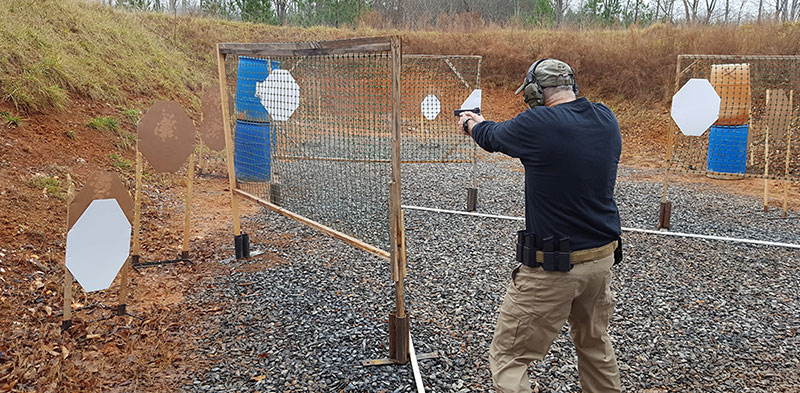
In the unit I served in, the remedy for this was the standard method of engagement was upped to five-round strings, with the intent of driving the target down to the ground via multiple lead injections.
Instead of scanning left, right and rear, a more realistic technique one should practice is re-indexing the target or targets after each engagement, whether it’s a double tap or five-round string or more, and look for positive hits. With multiple targets, sweep all targets again with the muzzle, looking at the targets to ensure you have the number of hits in the desired area. The intent is to help build the automatic response of relooking at the threat (or threats) and reshooting any that have weak hits.
Am I saying ignore your surroundings and focus solely on the threat before you? Not at all, but it takes more than just generically scanning on the flat range to build situational awareness for life-or-death situations.</p.
The most effective method is situational training, the best being force-on-force training. Having actual threats move around and engage you is the best way to reinforce principles such as checking your six, getting off the X, and other things you should do in a gunfight.
I promise you, after you have been hit in the back or the side a few times with Sim rounds from a threat you did not look for, you will soon naturally incorporate scanning between engagements.
The next best thing is to incorporate live-fire scenarios into training. Set up an array of targets in such a way that in order to effectively see and engage them all, you have to scan left, right, and check rear as shooters navigate the course.
This is a lot more realistic than just standing in front of a target, shooting it, then looking left, right, and rear—at nothing.
SUMMARY
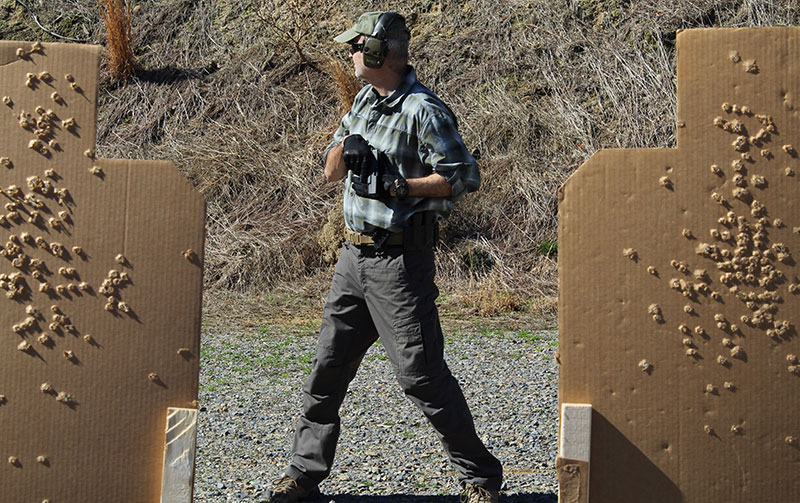
If you prefer to use other techniques, then by all means, keep using them, but ask yourself if you’re doing them because they truly work the best for you or because someone told you this is what you need to do in a self-defense situation. If it’s the latter, don’t be afraid to ask why. If their argument makes sense, then drive on.
However, if they cannot give you a good reason why, and offer some cookie-cutter excuse, don’t limit yourself in techniques based solely on the fear of not being able to do something under pressure just because someone said so.
A better approach is to learn all the different ways of doing something. As your skill and confidence build, you can decide for yourself what the best techniques are to utilize in a life-or-death situation.
Jeff Gurwitch is a retired Special Forces Soldier who served 26 years in the United States Army (18 years with Special Forces). He served in the First Gulf War, three tours OIF, and three tours OEF. He is an avid competitive shooter, competing in USPSA, IDPA and 3-Gun matches.


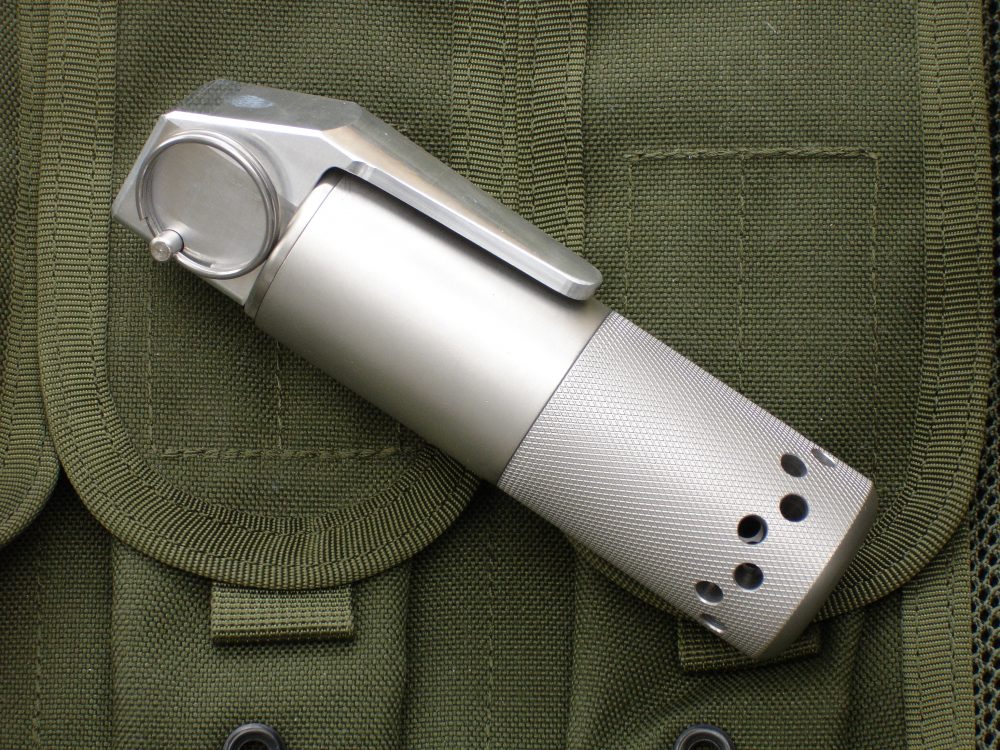
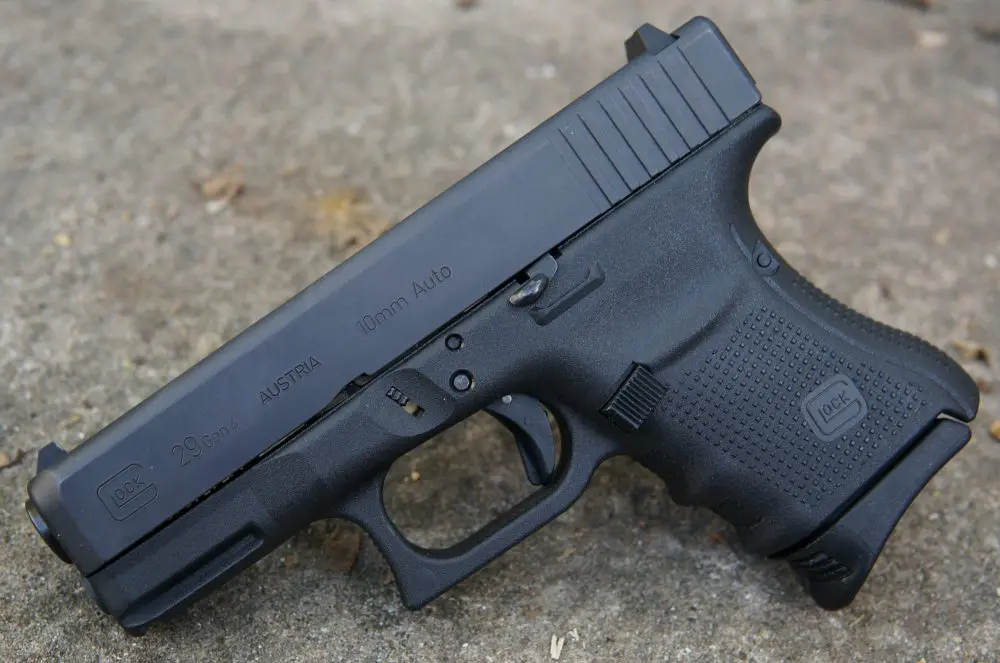
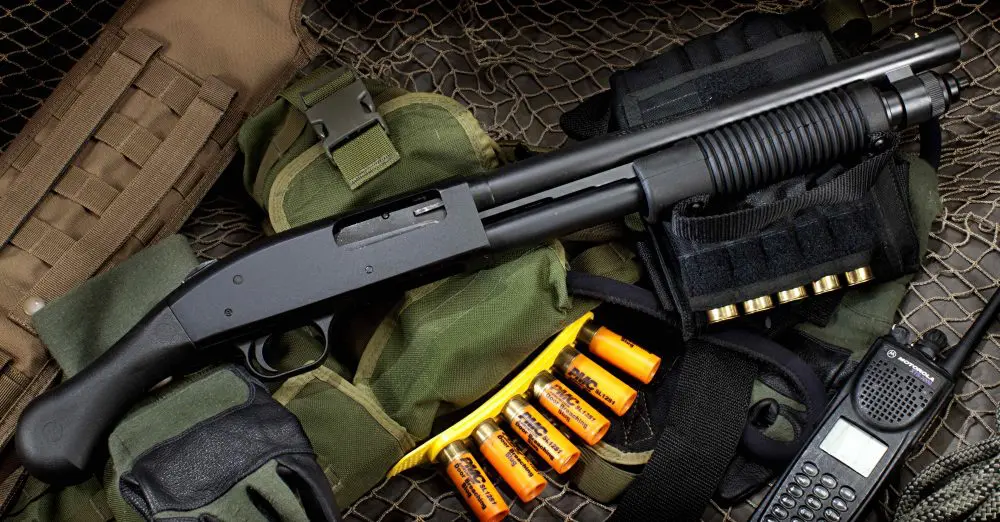
3 comments
Outstanding article and A man after my own heart and someone who “get’s it”. I’ve been banging on about this stuff for years, only to be shouted down by the experts (coughs lodly).
The problem with Gross Motor Skills is that (a) people love using the term without actually knowing what it means – it’s a “buzz” term which, when used, immediately results in lots of people nodding in agreement, whilst not actually knowing what GMS is.
Also, if we assume (and we should) that not all gunfights are the same and will require different responses/actions, then we should also understand that gms can. sometimes get in the way of a persons ability to think – GMS will only get you so far; thinking will get you all the way.
Scanning – i hate it. It has now become more of a carefully choreographed end of exercise “drill” with no contextual correlation to the exercise. A situation “might” require a quick “what’s going on” scan but others may not. The problem is that this scanning drill has been added to every single live firing exercise from grouping and zeroing, to 6-man contact drills – it’s an add on to tick a box, although I’ve never been able to fully understand where that box came from?
It looks stupid and is too mechanical; too rigid – all the things that a gunfight aren’t.
Again, great article and well overdue.
NeillY Davis
Go noisy usa llc
I do not see a difference in the power stroke and slingshot examples in the above photos. Am I missing something? I thought slingshot was performed by placing the rear of the slide between the thumb and index finger, not all four fingers.
any clarification would be helpful. Thanks!